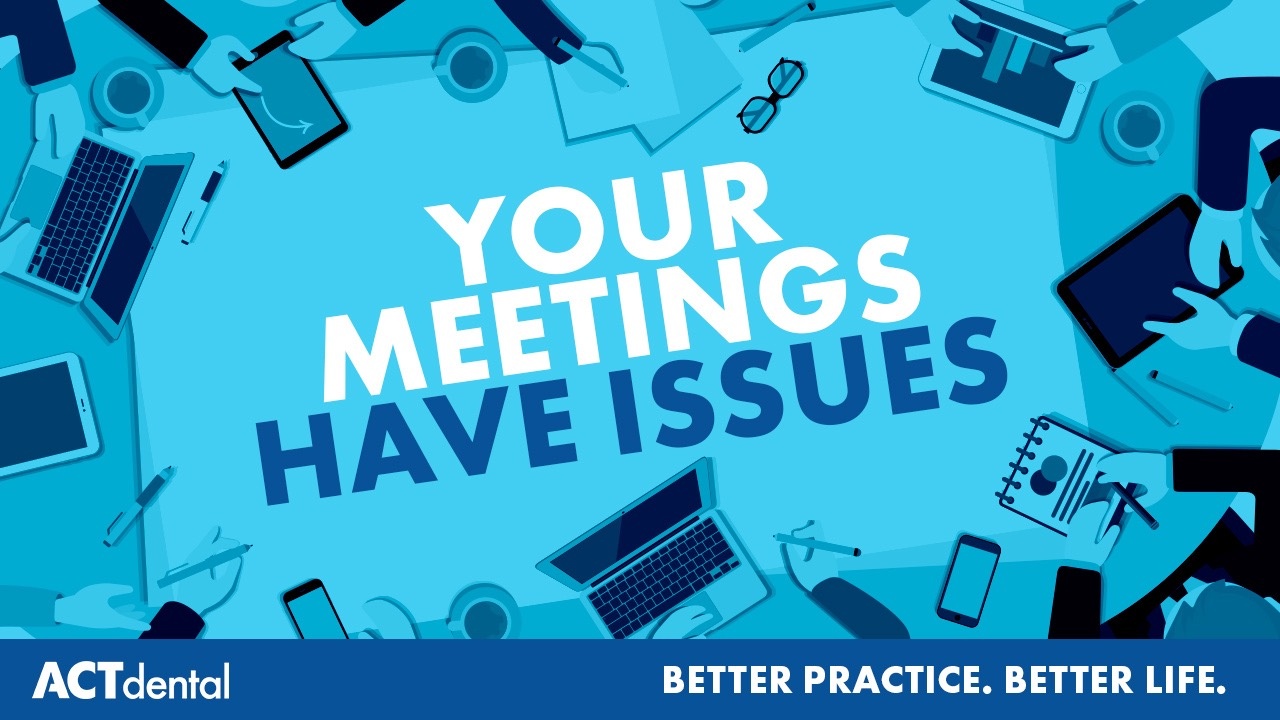Prioritize Your Problems
One of Kirk’s favorite sayings is that “Your problems aren’t your problems; your problems are how you think about your problems.” When we immediately think about the obstacles and reasons why something won’t work, we just end up dealing with little problems here and there, putting out fires as they arise. You need to pause, take a step back, and prioritize the issues facing you. Instead of just dealing with what pops up in the meetings, spend 30 seconds deciding which issues are the most important, and then start at the top of that list and talk about them until they’re solved. Bear in mind that you can’t spend too much time on individual issues—if you’re just going on and on, you may not be talking about the real issue. Be intentional about discussing the issues and give yourself a set amount of time to come to a solution; you’ll be surprised what you can get through.
Follow the Framework
To help us in our own team meetings, we utilize a framework to help us work through any issues we face. We use it in every single meeting, and it makes a big difference.
- Identify the real issue: To identify the real issue, you need to pause. Take a second during your team meetings to define what the real issue is. Don’t talk about the effects of the problem—focus on what they’re circling around.
- Get to the root cause: The problem is rarely the first thing that’s stated—there’s always something behind it. When you’re looking at the symptom, you want to know what the actual cause is. If you want to solve a problem, you need to get to its root cause, because nothing saves more time than when you start addressing the problem at its source. When you neglect the root cause your problems create bigger problems, which then always turn into crises. When you identify and solve problems early, you reduce their negative impact.
- Find the problem behind the problem: I find this step particularly useful when dealing with situations of Expectations Minus Reality Equals Conflict. You have conflict, which is a problem. But if you look behind that conflict, you’ll find that the true problem actually lives in the expectations, and now you can address it.
- Peel back the onion: Think about the problem more deeply, from different angles. I think of each side of the onion as a different factor influencing the problem. For example, as I peel from one side, I look at personnel; from another, software issues. As you peel from different sides, you eliminate other potential complications from the problem. The goal of peeling back the onion is to gain more clarity.
- Ask “And what else?”: This is the number one question you should learn to ask, because the real answer to a problem is rarely the complete and true answer. Asking questions makes us pause and think a little bit deeper— “Was the answer I gave totally correct or is there something else?” The extra information you get from asking questions is essential.
The goal is to think differently in your meetings. Instead of just rehashing the same points, learn to Identify, Discuss, and Solve your problems. It gives your life meaning when you gain the ability to solve your problems, and it’s incredible how much better your practice gets. Not only are you creating solutions to problems and running more effective meetings, but you’re also creating healthy processes in your practice. When you learn to think differently and get to the root of your problems, you’ll see them fly off your list and never come up in your meetings again.
We often don’t look at things in a way that helps us understand what’s truly going on, so it’s important to lean on people and get an outside perspective. This is where having a coach or leadership team is helpful, so reach out to ACT and let us help. You can’t always see the problem, so it’s good to have someone who can ask questions and help you get to a Better Practice, and a Better Life!
Jenni Poulos is a Lead Practice Coach at ACT.
Jenni Poulos
Jenni brings to dental teams a literal lifetime of experience in dentistry. As the daughter and sister of periodontists and a dental hygienist, she has been working in many facets of the dental world since she first held a summer job turning rooms and pouring models at the age of 12. Now, with over 10 years experience in managing and leading a large periodontal practice, she has a firm grasp on what it takes to run a thriving business. Her passion for organizational health and culture has been a driving force behind her coaching career. She has witnessed first hand how creating an aligned and engaged team will take a practice to levels of success that they never believed possible!
RECENT POSTS
Data Snapshot: Diagnostic Percentage
December 05, 2025
978: Unfair Care – Dr. Bryan Laskin
December 05, 2025
The Secret To Getting Patients To Say Yes: Lead With The Headline
December 01, 2025
976 (877 Replay): Metric Mondays: What is Your “Production Story”? – Dr. Barrett Straub
December 01, 2025
4 Steps to Eliminate your Overdue Account Problems
November 28, 2025
975: Revenue Reality: Mastering Production & Write-Offs – Miranda Beeson
November 28, 2025
974: Where is the Profit Hiding? – Christina Byrne
November 26, 2025
What Really Holds You Together?
November 24, 2025
